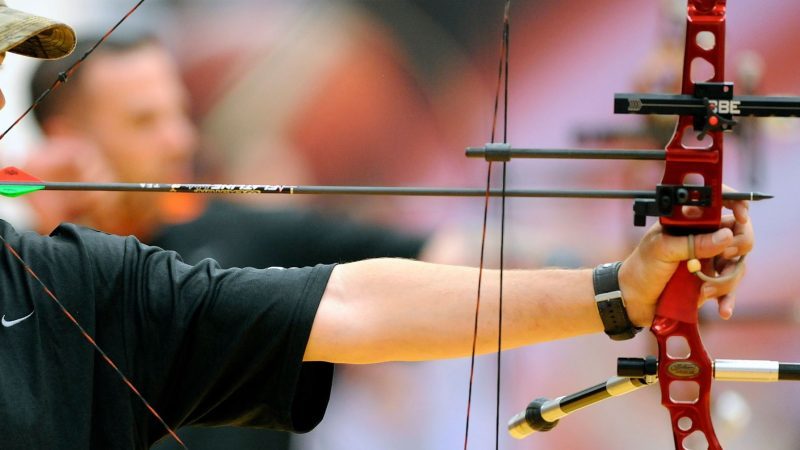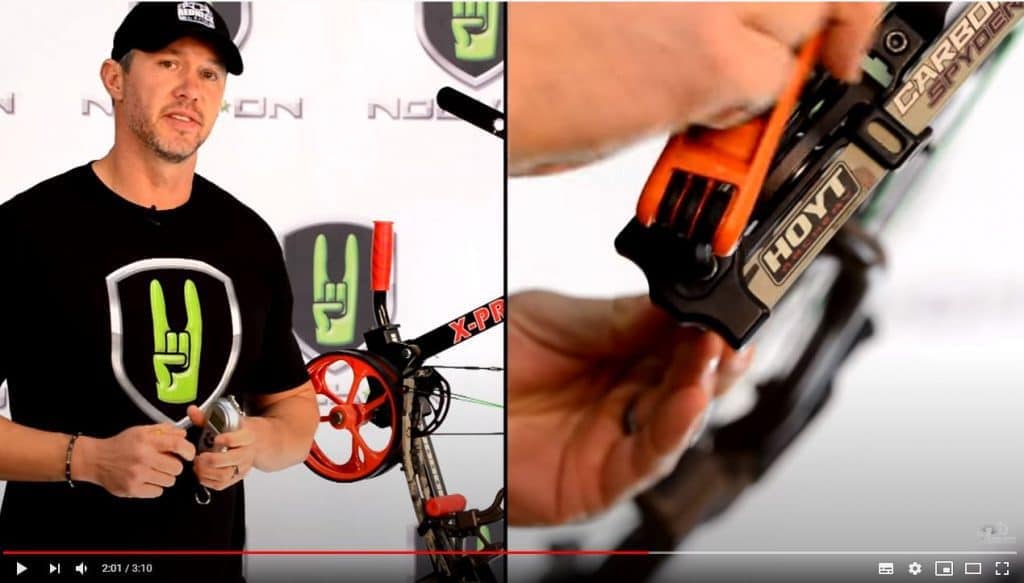Overall, compound bows tend to be fairly technical pieces of equipment. However, any savvy individual armed with basic knowledge regarding how a compound bow functions can make minor adjustments to their bow without the need to visit an archery shop. One such adjustment is that which pertains to your bow’s draw weight.
If you have ever wondered how to adjust the poundage on your compound bow, you would likely be surprised to find out how this task can be completed.
Contents (Jump to Topic)
ToggleBy taking stock of your bow’s current draw weight, adjusting limb bolts in the correct orientation,and checking the poundage that is rendered, you can adjust your draw weight with ease.
Key Points
Draw Weight Adjustment
Find the limb bolts. These bolts connect the bow’s arms to the riser and serve as the key components you’ll adjust to modify the draw weight, determining the tension applied to the bowstring during the draw.
Draw Weight Selection
An optimal draw weight allows for a smooth and comfortable draw without sacrificing form or accuracy. Avoid beginning with excessive draw weight, leading to strained or erratic shots.
Beginners
If you´re not experienced in adjusting draw weight, seek assistance from a professional or an experienced archer.
Essential Equipment
Allen Wrench Set to adjust the limb bolts. Some bows require a bow press to safely and effectively adjust the draw weight by relieving tension on the bowstring.
Draw Weight
A bow’s draw weight is the force that must be exerted to pull its bowstring rearward into the fully drawn position.
Exact draw weights differ from one bow to the next, and range approximately 10 pounds from their lowest to highest adjustment.
However, several highly adjustable models now feature draw weights that can vary by as much as 50 pounds.
A bow’s draw weight factors into both shootability and performance. The relationship between these two factors often comes down to a balancing act that centers around one’s ability to properly choose their own ideal draw weight.
In fact, an incorrectly set draw weight has the potential to limit your overall accuracy and make for an uncomfortable shooting experience.
As a general rule, the higher a bow’s draw weight, the faster arrow speeds it will be capable of achieving.
The direct trade-off to this principle is that excessive draw weight, beyond that which can comfortably be drawn, can lead to poor form and possible injury.
An individual archer’s ideal draw weight will be the heaviest weight that he or she can draw comfortably, smoothly and concisely.
If you wish to raise your draw weight from its current setting, it is best to do so gradually.
A rapid increase in draw weight can take months for your body to become accustomed to, which is plenty of time for bad shooting habits to develop.
Steps For Adjusting Draw Weight
Adjusting a compound bow’s draw weight is easily done and often takes no more than 10 minutes to complete.
When doing so, there are a few simple steps that must be followed to avoid equipment damage or injury.
Step One: Check Your Current Draw Weight
Before adjusting your draw weight, it is always helpful to record it for reference.
This allows you to pinpoint what your new weight should be set at to achieve the desired result. This is accomplished with the use of a bow scale.
These scales come in multiple forms, as well as both digital and analog versions. The choice of which scale type to use is simply a matter of personal preference.
With a scale chosen, secure the hook to your bowstring’s D-loop, and pull the bow to full draw. Record the highest weight figure shown.
Step Two: Notate Min/Max Limb Poundage
Prior to actually setting the draw weight itself, familiarize yourself with your bow’s minimum and maximum limb weight ratings.
Most limbs will feature a 10-pound variance between their minimum and maximum weights, though these ranges can vary.
The vast majority of modern compound bows feature a limb poundage sticker, which is typically found on the inside segment of the limb close to the attached cam.
If no such sticker can be found, consult your bow’s manufacturer for further instructions.
Step Three: Tighten Limb Bolts Until Bottomed
You will now take an appropriate-sized Allen wrench and tighten each limb bolt down until it bottoms completely.
Alternate from one limb to the other while performing this practice, turning no more than two turns at a time before switching ends.
It is worth noting that some limb bolts feature secondary locking screws as well.
These screws can often be found in the riser where it meets the bow’s limb pocket.
If your bow features such bolts, most manufacturers recommend their removal prior to draw weight adjustment.
Step Four: Back Off Limb Bolts As Desired
By tightening your bows limbs down simultaneously, you ensure that the bow’s tiller is set correctly.
You will now retain this consistency by backing each limb bolt out in an alternating fashion. By turning your limb bolts counterclockwise, you will be lowering the bow’s draw weight.
Each full revolution of the limb bolt coincides with a set weight variance. These variances typically range from two to five pounds, depending upon the bow manufacturer and model.
Reduce your draw weight, while periodically checking for an exact poundage figure with the use of a bow scale, until reaching a weight that feels ideal.
Step Five: Double Check Poundage
Once an ideal draw weight has been reached, check for exact poundage figures with the use of a bow scale, once more.
This not only allows you to record this figure for future reference but also presents the perfect opportunity to verify that your bow’s draw weight still falls within its minimum and maximum specification range.
With your final draw weight verified, tighten your bow’s locking bolts, if so equipped.
It is also highly recommended to shoot 10-15 shots from your bow to familiarize yourself with this new draw weight, and to ensure that you are completely satisfied with the outcome.
For more information on adjusting your draw weight, watch this video.
Note: When a bow’s draw weight is adjusted, arrow speeds are also affected. Because of this, an arrow’s trajectory and point of impact are likely to change at a given yardage.
Never assume that your sight’s adjustment is still adequate after a change in draw weight. Instead, shoot your newly adjusted bow at various yardages, and set sights accordingly.
Adjusting Draw Weight Like A Pro
Choosing the proper draw weight for your bow is vital to archery success. The ability to adjust this weight as needed is of immense value, as it allows you to tailor-suit a bow to your specific needs, which ultimately promotes enhanced accuracy.
With the use of a bow scale and a quality set of Allen wrenches, you can adjust your bow’s draw weight like a pro, in only mere minutes.
Please feel free to leave any comments that you might have, as we always appreciate feedback from our readers.









